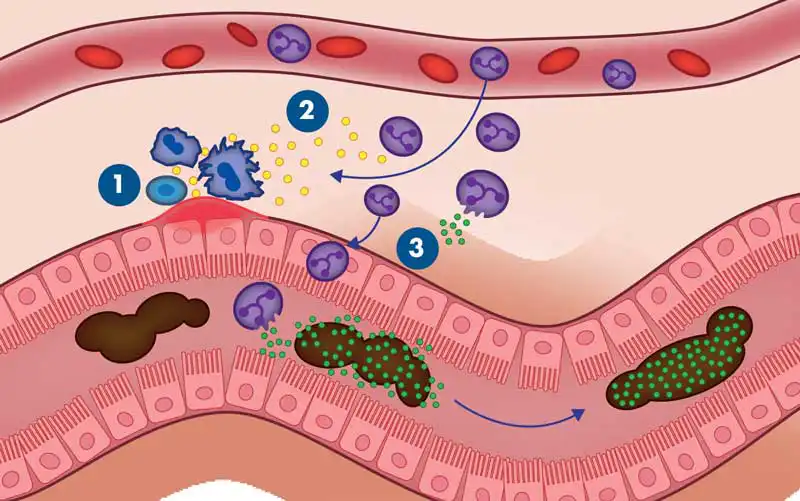16 June 2025
The article covers faecal calprotectin, a non-invasive tool that supports the diagnosis and monitoring of gastrointestinal inflammation.

Gastrointestinal inflammation in dogs can be frustrating to manage – especially when invasive diagnostics such as endoscopy or biopsy aren’t an option.
Faecal calprotectin offers a fast, affordable and evidence-based tool to support clinical decision-making in inflammatory enteropathies, from initial diagnosis through to monitoring and treatment response.
You can find out more at the website here.
Enteropathies rank among the most common disorders in veterinary practice, with a prevalence of more than 10% in dogs2. Vomiting, diarrhoea and weight loss are frequent presenting signs, but reaching a definitive diagnosis is not always straightforward.
Definitive diagnosis of conditions like canine inflammatory bowel disease (IBD) typically relies on invasive investigations such as endoscopy or biopsy. But these are costly, require anaesthesia and carry risks, with complication rates following full-thickness small intestinal biopsies around 12%3.
Faecal calprotectin offers a non-invasive adjunct for assessing gastrointestinal inflammation. Well-established in human gastroenterology, a growing body of evidence supports its use in the diagnosis and monitoring of chronic GI disease in veterinary medicine.

Faecal calprotectin is a neutrophil-derived biomarker of gastrointestinal (GI) inflammation4,5. During GI inflammation the innate and adaptive immune responses are stimulated, resulting in an influx of phagocytic cells and the release of inflammatory cytokines. These, in turn, chemoattract neutrophils and trigger a cascade of events leading to neutrophil disintegration (Figure 1).
Calprotectin makes up around 60% of the neutrophil’s cytosol (fluid within a cell’s cytoplasm). As neutrophils disintegrate, calprotectin is released into the gut lumen, where it enters the faecal stream, and can be measured.
Importantly, calprotectin is resistant to degradation by faecal bacteria and stable at room temperature for up to a week. This means the level of faecal calprotectin reflects the degree of neutrophil infiltration in the GI mucosa during inflammation4,5.
Elevated faecal calprotectin may be seen in a range of conditions involving intestinal inflammation, including:
Recent UK validation data using the GIQuest lateral flow test has confirmed the test’s diagnostic utility in clinical settings. In a study from the University of Bristol comparing healthy dogs and those with histologically confirmed inflammatory enteropathy, calprotectin levels demonstrated clear separation between groups. Using a threshold of 3mg/kg, the test showed 94% sensitivity and 96% specificity10.
Faecal calprotectin can support early decision making in dogs with GI signs, guide the need for further investigation and help differentiate inflammatory from non-inflammatory disease. It is particularly useful when biopsy or referral is not an option.
It also plays a valuable role in treatment monitoring, after diagnosis has been made. Calprotectin levels may decline before clinical signs improve, offering early reassurance during elimination diet trials or immunosuppressive therapy. This initial biomarker response can help reinforce owner compliance when clinical improvements are subtle or slow to appear.
In human medicine, calprotectin is used to evaluate treatment efficacy, anticipate relapse and reduce unnecessary endoscopic reassessment. Its use in veterinary medicine could offer similar benefits – helping to tailor therapy more precisely and support clinical decisions with objective data.
GIQuest is a faecal calprotectin point-of-care test that provides fast, actionable insights into gut integrity, supporting diagnosis and treatment monitoring and helping to reveal the next step for GI cases.
To learn how GIQuest can support your approach to inflammatory GI cases contact Carus Animal Health [email protected]